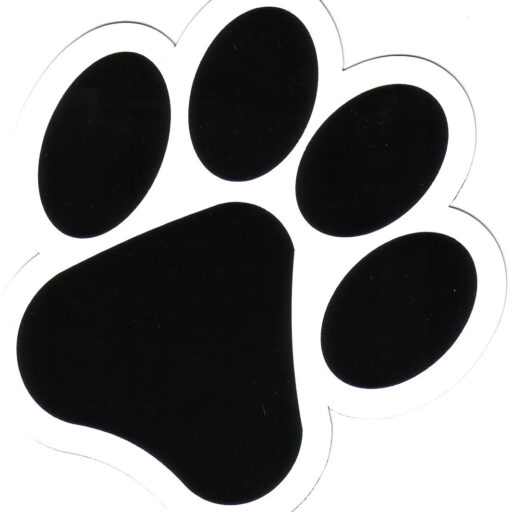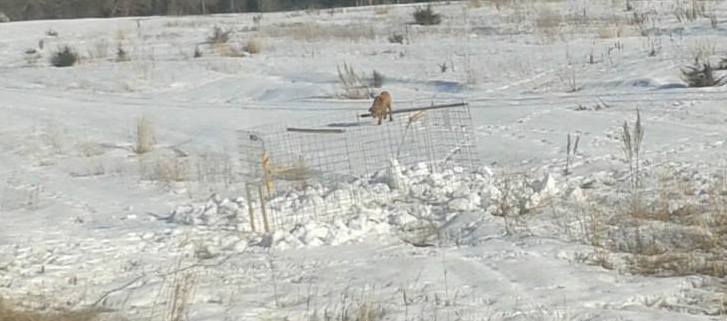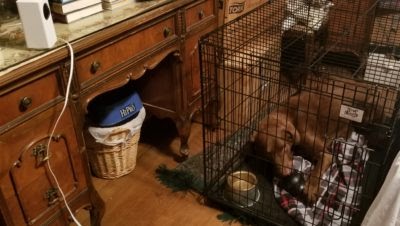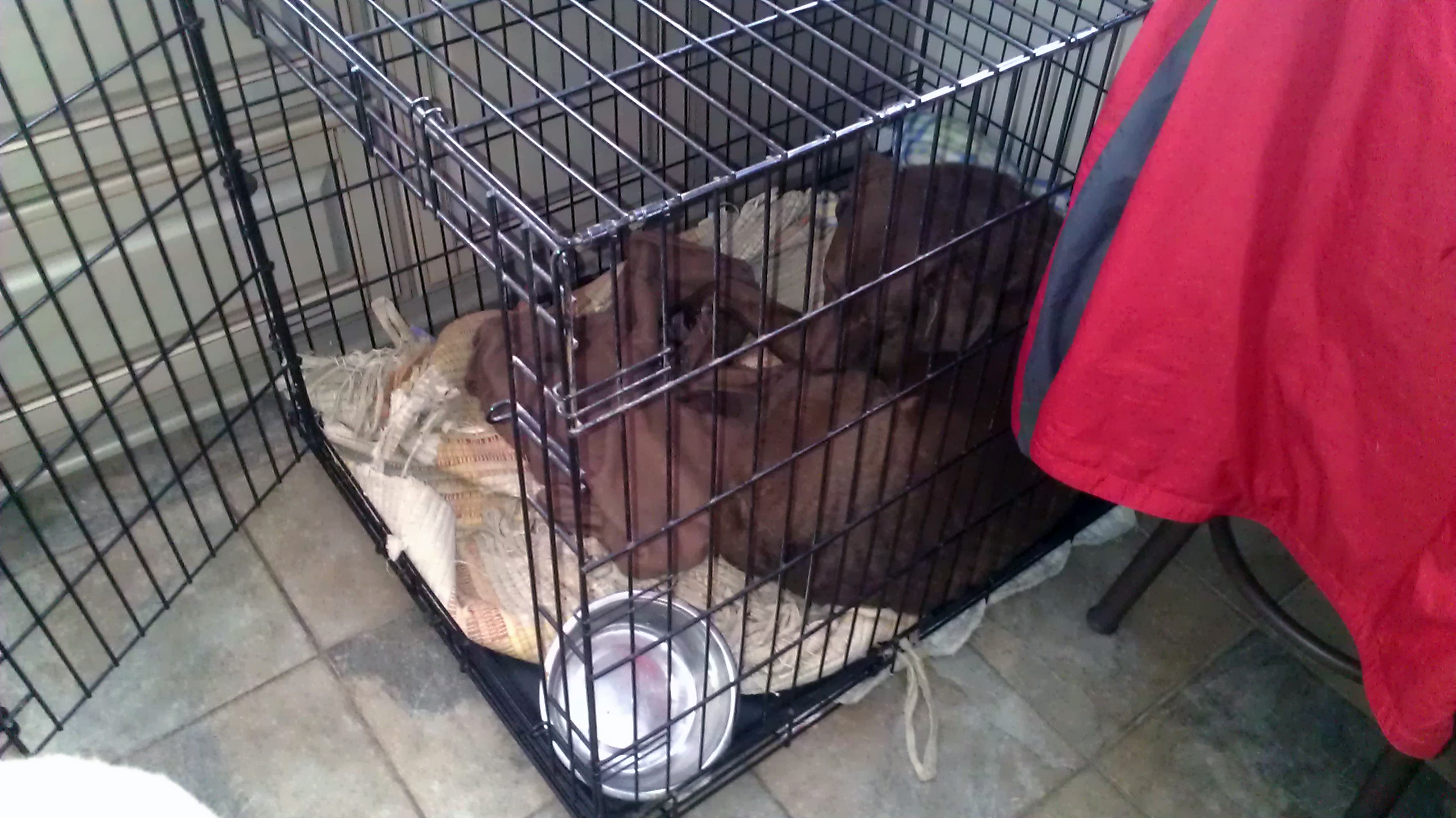Imagine this
How would you feel if I put you on a plane and didn’t tell you why or where you were going?
When you get off the plane, you are in a foreign country. You don’t know a soul. You don’t speak the language. You don’t even understand the culture!
The people who pick you up at the airport seem nice but you have no idea because you don’t speak their language and they don’t speak your language!
Who are they? What do they want with you? Where are they taking you? How long you will stay with them and how will treat you?
This has to be a bit like our dogs feel when we pick them up from the shelter or foster. We are strangers. We take them to a strange place. They have no idea if they are safe or not. They don’t know what is expected of them or how to act. They often just want to hide in the corner and try to figure out what is next…
Let’s give them that time! Let’s give them the time to observe us from a distance. Let’s let them decompress and adjust to us in their own time. Let’s understand that they may do things that we feel are inappropriate but give them a chance to feel their way.
Two-Week Decompression Time
Decompression times do not have to mean a crate if the dog can be trusted outside of a crate, but an open crate should be provided for a safe place.
I don’t know about you but I know I would probably shutdown and want to stay to myself and regain my confidence in my new surroundings, observe my new people and I certainly wouldn’t want their kids (two and four legged) in my face trying to be my friend and play. I want to stay in my safe place and watch…. We call this the Two-Week Decompression Time or Shutdown, there are a lot of names for it but the protocol is all very similar. There are lots of articles and information on it.
Decompression area
-
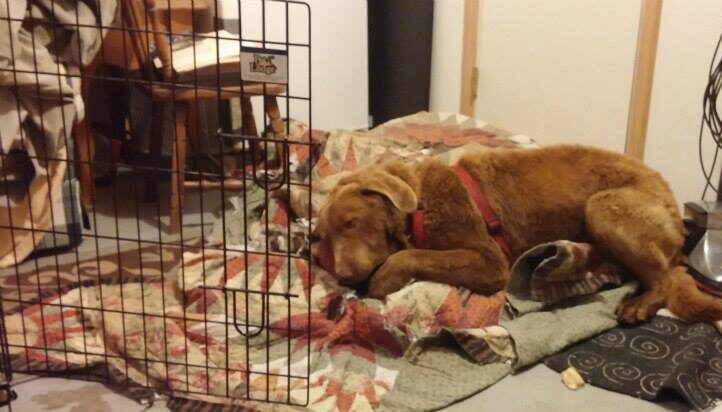
Yukon chewing on a toy in his Decompression Area during the first days in his new home. Keep a leash connected to dog’s collar or harness. By dragging a leash, you can easily pick up the leash and lead them without grabbing their collar and respecting their personal space (remember a dog’s personal space is 10 to 12 FEET)
- Provide dog with a crate, even if they aren’t fond of crates, you can put a crate in a safe area and leave the door open so dog can go in and out as they desire. Maybe cover crate partially with a sheet to provide some privacy.
- Crate should be in an area that is neither isolated nor in the middle of everything. Dog should be able to observe you without feeling stressed and overwhelmed.
- Keep their routine very simple and very structured:
- Outside to potty
- Eat
- Time to observe
- Ability to interact but also to stay in safe zone
Here is one of my favorite articles on The First Two Weeks from Rebound Hounds. (http://www.reboundhounds.org/the-first-two-weeks.html)
ALWAYS on a Leash
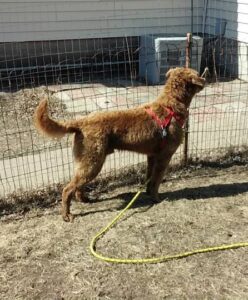
When outside the dog should be kept on a leash or long line EVEN when you have a fence.
Flight risk is HUGE with new dogs.
During this shutdown time, I suggest keeping any resident dogs (dogs that already live in the house) separate and at most walking them together outside in neutral areas such as walks around the neighborhood. I do not suggest having them in the backyard together, even on leash because the resident dog may be territorial. Instead have each dog outside alone so they can do their business, enjoy the outdoors and encounter each other’s scents to realize they are both living there and they can acclimate in safe, gradual manner.
Introducing New and Resident Dogs
Once the Two Week Decompression Time is done, you can start introductions.
- First introductions should be outside, on leash and in a NEUTRAL area.
What is a neutral area? An area that MANY dogs and people frequent and your dogs do not. - I typically use a neighborhood walk with 2 people so each person has a dog and you go for a walk with NO real touching interaction.
- I like them to just walk nicely with the other dog in the following sequence left to right
Dog ? Person ? Person ? Dog
Dogs should be on the outside and people inside. - This gives the dogs close proximity but their own space.
- Space is important. Think about when you meet new people, do you like them in your face? In your personal zone? No, we generally shake hands at an arm’s distance.
- Dog’s can’t shake hands (sniff butts) and maintain distance so let them just co-exist for a few walks.
- Again, we don’t want to force either dog onto the other and we don’t want either dog to be uncomfortable.
- Watch body language and it is ALWAYS BETTER to stop too soon and keep it safe and friendly.
Here is an article from Lucky Dog Animal Rescue that has some great information, Tips on Introducing a New Dog into Your Household Pack. (https://www.luckydoganimalrescue.org/articles/tips-introducing-new-dog-your-household-pack)
Best advice is to take it slow and keep everyone safe. It is much more efficient to do slow introductions than to try and recover from one that went too quickly. If you have questions or concerns, reach out to a knowledgeable trainer or dog person.
